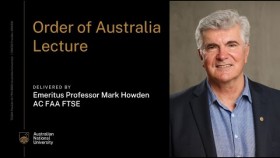Australia needs to plan for relocation of at-risk communities
Australia needs a strategic plan for the relocation of communities most at risk from climate change, including those in places that will become potentially unliveable, according to new report led by experts from The Australian National University (ANU).
With a significant percentage of Australia’s population living in areas increasingly exposed to the effects of climate change, the authors argue we need to take action now.
“Even if we stop emitting greenhouse gases tomorrow, some parts of Australia will become unliveable,” Associate Professor Roslyn Prinsley, co-author of the report and Head of Disaster Solutions at the ANU Institute for Climate, Energy and Disaster Solutions, said.
“By 2030, the Climate Council has estimated that high risk riverine flooding alone is expected to result in around one in 25 homes across Australia being uninsurable.
“With intensifying floods, cyclones and fires displacing people from their homes, how we relocate our most at-risk communities to keep people safe will become an increasingly vital conversation.
“We’re calling for the establishment of a National Relocation Strategy to provide support, guidance and agency for those making these difficult decisions once all other options are exhausted, rather than waiting to react to the catastrophic circumstances of a disaster.”
Relocating Australian Communities at Risk, a team of experts from across Australia, believe the first step in this process should be gathering as much information as possible on communities at risk from climate change impacts, now and in coming decades.
This includes communities situated along rivers, floodplains and low-lying coastlines, severely drought-affected areas, and regions confronting extreme heat and bushfires.
“Any future relocation processes will need to be well-planned and voluntary, with community at the centre of decision-making,” report co-author Tony Fry from the University of Tasmania (UTAS) said.
“The prospect of relocation can be very unsettling and traumatic. For most people the sense of loss is unavoidable. But relocation can also offer new opportunities and potential improvements in ways of life.
“For this to be possible, the community has to play a major part in what form the relocation might take.”
The researchers believe developing better risk mapping will also play a big role.
“Developing evidence-based, dynamic risk mapping that better allows us to forecast emerging and future compound climate risks will assist in identifying priority locations,” Associate Professor Prinsley said.
“We also need to establish registers of information on resources, infrastructure, available land, machinery and equipment that might be relevant for any planned relocations. This should include an inventory of existing skills and expertise within the community.
“We can wait for disasters to happen and face the dislocation and destruction we are seeing after floods and fires. Or, we can work out where is most likely to become unliveable, and help people move to safer places.”
The report’s authors include experts from the University of Sydney, University of Canberra and Mather Architecture, as well as UTAS and ANU.
The full report is available online.
This story originally published by the ANU Reporter.











